 | TODAY IN SCIENCE HISTORY NEWSLETTER - 25 SEPTEMBER |
| Feature for Today |
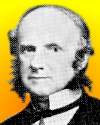 On 25 Sep 1878, a letter warning against the use of tobacco, Dr. Charles Drysdale, senior physician to the Metropolitan Free Hospital, was published in The Times newspaper in Britain. He pointed to “the enormous consumption of tobacco in all European states,” and concluded “that the use of tobacco is one of the most evident of all the retrograde influences of our time.” On 25 Sep 1878, a letter warning against the use of tobacco, Dr. Charles Drysdale, senior physician to the Metropolitan Free Hospital, was published in The Times newspaper in Britain. He pointed to “the enormous consumption of tobacco in all European states,” and concluded “that the use of tobacco is one of the most evident of all the retrograde influences of our time.” Years earlier, in 1864, he published in Med. Circular results of excessive use, such as cases of jaundice in healthy young men smoking 3/4-oz daily, and a young man who smoked 1/2-oz daily having “most distressing palpitation of the heart.” If you are amazed that the dangers of tobacco were being pointed out so much more than a century ago, you will be interested how research on the harmful chemicals in tobacco smoke were already well-known when he wrote he wrote his book, Tobacco and the Diseases It Produces, in 1875. In an extract from that book, the section on Tobacco Chemicals lists harmful pyridine bases found in the products of decomposition of nicotine. Particularly notable is his recognition, over 135 years ago, of the dangers of passive smoking to non-smokers inhaling tobacco smoke in public rooms. |
| Book of the Day | |
|
| Quotations for Today | |
 | All infections, of whatever type, with no exceptions, are products of parasitic beings; that is, by living organisms that enter in other living organisms, in which they find nourishment, that is, food that suits them, here they hatch, grow and reproduce themselves. |
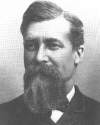 | In scientific study, or, as I prefer to phrase it, in creative scholarship, the truth is the single end sought; all yields to that. The truth is supreme, not only in the vague mystical sense in which that expression has come to be a platitude, but in a special, definite, concrete sense. Facts and the immediate and necessary inductions from facts displace all pre-conceptions, all deductions from general principles, all favourite theories. Previous mental constructions are bowled over as childish play-structures by facts as they come rolling into the mind. The dearest doctrines, the most fascinating hypotheses, the most cherished creations of the reason and of the imagination perish from a mind thoroughly inspired with the scientific spirit in the presence of incompatible facts. Previous intellectual affections are crushed without hesitation and without remorse. Facts are placed before reasonings and before ideals, even though the reasonings and the ideals be more beautiful, be seemingly more lofty, be seemingly better, be seemingly truer. The seemingly absurd and the seemingly impossible are sometimes true. The scientific disposition is to accept facts upon evidence, however absurd they may appear to our pre-conceptions. |
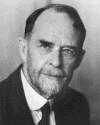 | That the fundamental aspects of heredity should have turned out to be so extraordinarily simple supports us in the hope that nature may, after all, be entirely approachable. Her much-advertised inscrutability has once more been found to be an illusion due to our ignorance. This is encouraging, for, if the world in which we live were as complicated as some of our friends would have us believe we might well despair that biology could ever become an exact science. |
| The science of fossil shells is the first step towards the study of the earth. | |
| Quiz | |
| Before you look at today's web page, see if you can answer some of these questions about the events that happened on this day. Some of the names are very familiar. Others will likely stump you. Tickle your curiosity with these questions, then check your answers on today's web page. | |
| Births | |
 | Thomas Chrowder Chamberlin, born 25 Sep 1843 was a U.S. geologist and educator, known for his “planetesimal hypothesis,” proposed with Forest Ray Moulton in 1904. What was his planetesimal hypothesis? What was his planetesimal hypothesis? |
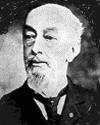 | William Le Baron Jenney, born 25 Sep 1832, was an American civil engineer and architect whose technical innovation made possible the development of the skyscraper. His Home Insurance Building in Chicago was one of the first buildings with the innovation which became the standard for American skyscraper design. What was his important innovation that made a skyscraper possible to build? What was his important innovation that made a skyscraper possible to build? |
| Deaths | |
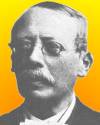 | Hieronymus Theodor Richter (1824-1898) was a German metallurgist who co-discovered an element. He was assistant to Ferdinand Reich who suspected a new element was present in the samples of zinc ore he had chemically processed, but was too colourblind to do the spectroscopic analysis. That Reich turned over to Richter. Viewing a sample on a loop of platinum wire eated in a Bunsen flame, Richter saw a brilliant indigo spectral line which confirmed the presence of a new element. Which element did Richter assist in discovering? Which element did Richter assist in discovering? |
| Events | |
On 25 Sep of a certain year, scientists first reported that freon gases released from aerosol spray cans were destroying the ozone layer. In what decade did this occur? In what decade did this occur? | |
On 25 Sep 1956, when a new transatlantic cable system began operating (between Clarenville, Newfoundland and Oban, Scotland) it was a world's first. What made it the world's first, different from previous cables? What made it the world's first, different from previous cables? | |
| Answers |
| When you have your answers ready to all the questions above, you'll find all the information to check them, and more, on the September 25 web page of Today in Science History. Or, try this link first for just the brief answers. Fast answers for the previous newsletter for September 24: carbon and hydrogen (CH radical) • neon light • Hans Geiger • the decade containing the year 1960 • steam engine. |
| Feedback |
 If you enjoy this newsletter, the website, or wish to offer encouragement or ideas, please send feedback by using your mail reader Reply button. If you enjoy this newsletter, the website, or wish to offer encouragement or ideas, please send feedback by using your mail reader Reply button. Your click on a StumbleUpon, Google+ or Facebook social button on the site webpages is also a welcome sign of appreciation. Thank you for using them. |
| Copyright |
| To find citations for quotations go to the corresponding webpage by clicking on the “quotes” balloon icon. Sources for the thumbnails appear on today's webpage with the corresponding item. � This newsletter is copyright 2013 by todayinsci.com. Please respect the Webmaster's wishes and do not put copies online of the Newsletter � or any Today in Science History webpage. (If you already have done so, please remove them. Thank you.) Offline use in education is encouraged such as a printout on a bulletin board, or projected for classroom viewing. Online, descriptive links to our pages are welcomed, as these will provide a reader with the most recent revisions, additions and/or corrections of a webpage. For any other copyright questions, please contact the Webmaster by using your mail reader Reply button. |
--
If you do not want to receive any more newsletters, Unsubscribe
To update your preferences and to unsubscribe visit this link


Δεν υπάρχουν σχόλια:
Δημοσίευση σχολίου